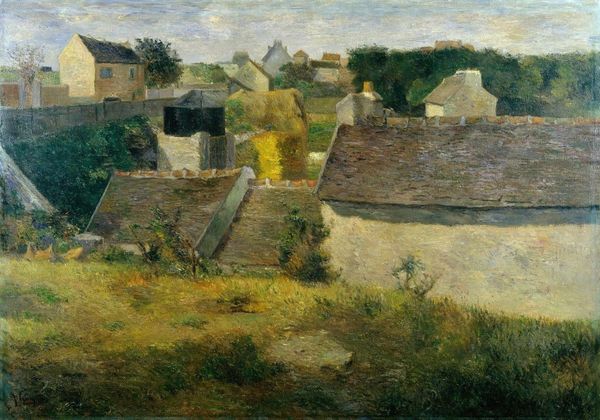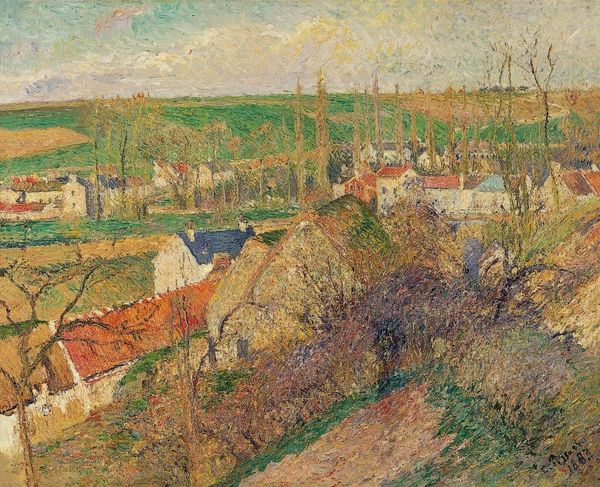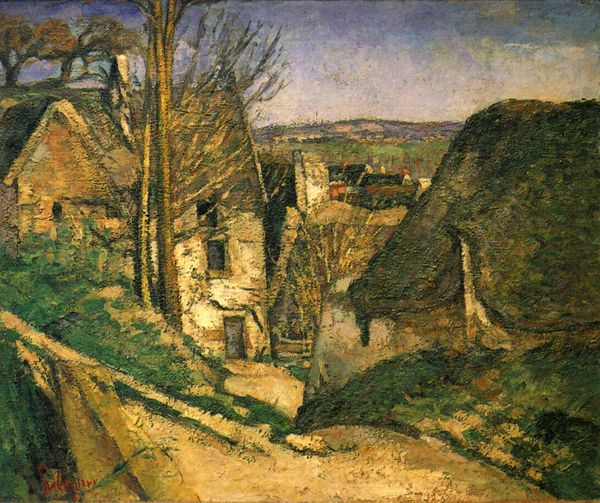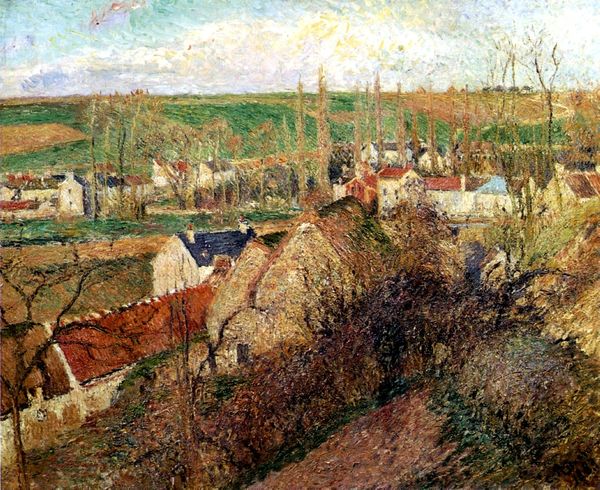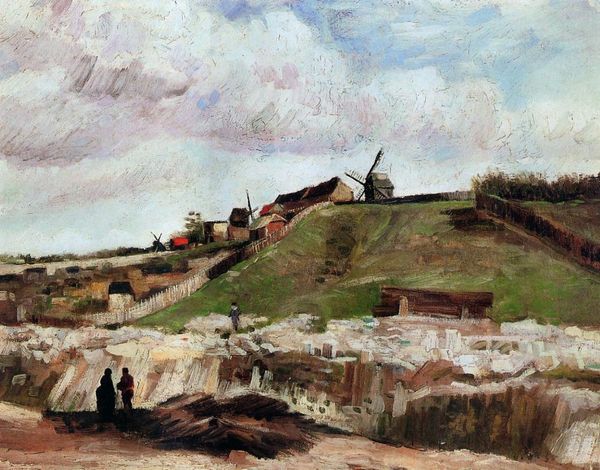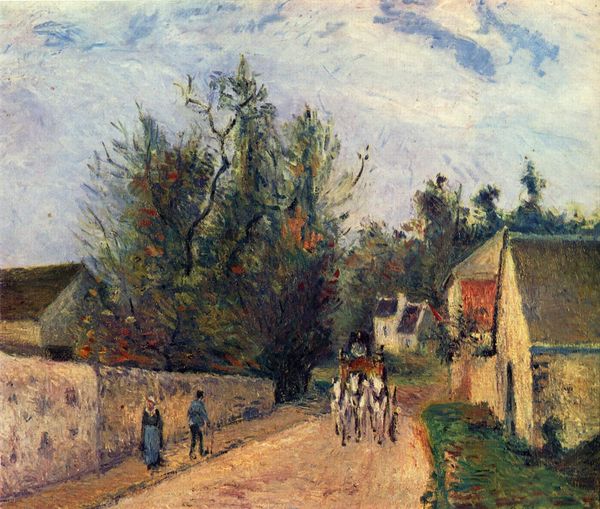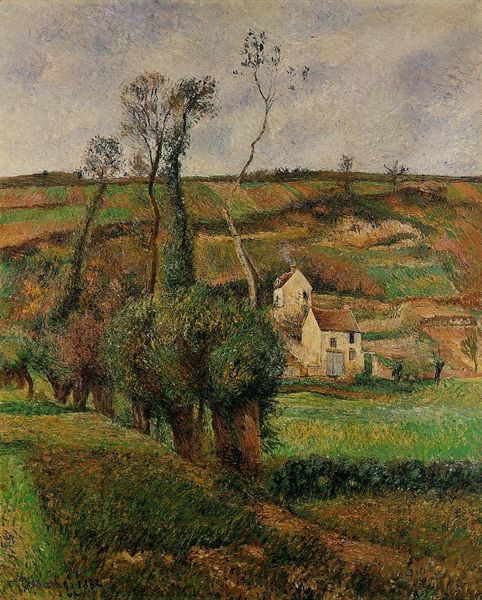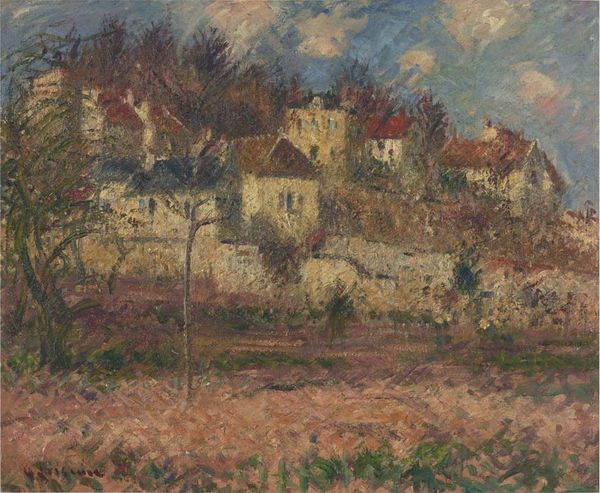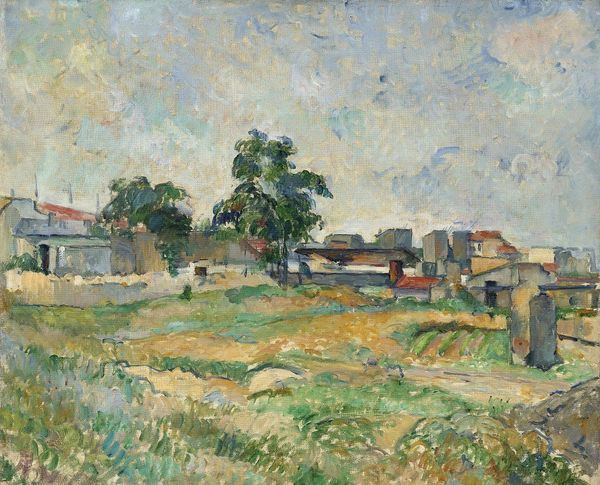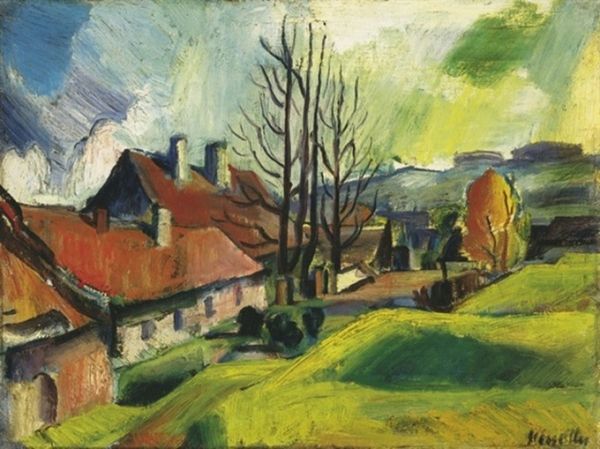
Copyright: Public domain
Curator: This is Edgar Degas's "Houses at the Foot of a Cliff (Saint-Valery-sur-Somme)," painted in 1898 using oil on canvas. Editor: Immediately, I’m struck by the quiet melancholy of it. The muted tones, the way the houses huddle together… there's a real sense of isolation. Curator: Indeed. It's interesting to note that despite Degas's fame for painting ballet dancers, he also explored landscape painting. What we see here is influenced by plein-air painting practices popular at the time, though distinctly interpreted through his unique vision. He's moved away from the staged theatre of Parisian ballet to the coast in Normandy. Editor: The houses, to me, look almost like they're hiding. The heavy, grey sky seems to weigh down on them. The cliff behind, crowned with more buildings, feels both protective and imposing, a symbol perhaps, of community, but also hierarchy. There’s a clear separation of levels. Curator: Well observed. Think about the era: the late 19th century in France, a time of great social upheaval. The rigid societal structures were beginning to show cracks as industrialization grew and populations shifted towards the cities. These houses clustered at the base of the cliff become symbolic of that tension – the rootedness of traditional life pressed upon by forces beyond its control. Editor: The thick, almost blurred brushstrokes, I think, also contribute to that sense of unease. It doesn't allow us to settle on any one detail. It suggests transience. Even the smoke curling from a chimney could be construed as representative of modernity encroaching upon this seemingly simple existence. It subtly hints that progress is constant even for traditional society. Curator: Exactly. Degas doesn’t idealize rural life; rather, he captures it with an unromanticized gaze. You feel the weight of history, the pressures of the modern world creeping in, much like the tide that laps against that shoreline. Editor: It feels like a scene caught between worlds: not entirely idyllic, yet not entirely consumed by modernity. It is an honest portrayal of a changing social structure through powerful visual imagery. Degas managed to find universal themes within everyday life. Curator: And for me, it underscores how artists can use landscape not just to depict a scene but to comment on the complex interplay of society and history. Editor: Yes, it reveals a kind of enduring visual language that reminds us that what we see can say far more than initially meets the eye.
Comments
No comments
Be the first to comment and join the conversation on the ultimate creative platform.
